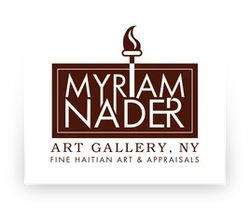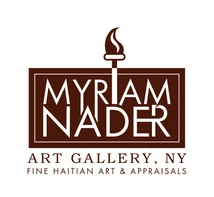How to Donate Your Art Collection to Charity for a Noncash Contribution?
Donating your work to a museum or a charitable organization qualifies you for certain tax benefits, but determining where, when, and how to begin can be difficult. Below we take you through the requirements and recommendations to successfully donate your art to a qualifying public (not private) IRS-approved charitable organization.
Start Early - The ideal time to begin planning and organizing your charitable art contribution is as early in the fiscal year as possible. Due to the IRS's time constraints, the end of the year may be extremely hectic for appraisers and all the other parties involved. Museums and NGOs sometimes require several approvals before accepting donations, which can take some time. To guarantee that you meet the deadline, start early.
Own the Artwork for More Than a Year - You cannot buy a work of art to donate it the following year to receive a tax benefit. Artwork must be deemed a long-term capital asset to qualify for a tax deduction. You must have held the property for longer than one year to claim a work's current fair market value as the charitable deduction value.
Find a Donee Who Wants Your Work - Contact the museum or institution where you wish to contribute and ensure that your collection is compatible with their mission and values. It's essential to interact with the charity officials to learn their plans for the artwork. If the artwork is worth more than $5,000 and the donor intends to claim a tax deduction for the fair market value, the charity must retain it for at least three years.
Choose Your Charities Wisely - In the perspective of the IRS, not all charities are created equal. In terms of associated use criteria, you must prove that the donee will be able to "use" the donation as intended. For example, art donated to a museum should be used in the institution's collection, while art donated to a university should promote students' education (displayed and used in art history lectures, for instance). Before promising any charitable contributions of great art, it is generally advisable to confer with a knowledgeable attorney or accountant first.
Ensure That The Charity is based in the United States - To claim an income tax deduction, the charity must be headquartered in the United States. Several foreign museums have formed "Friends of..." organizations to get around this prohibition. Even though the parent organization is situated overseas, American contributors can claim (and get) an income tax deduction by establishing a U.S.-based foundation that accepts donations. Always consult with updates at Publication 526 (2021), Charitable Contributions
You must honestly be an art collector or investor. In addition to meeting all these criteria, you must also fit the classification of an art collector or investor as defined by the IRS to claim a tax deduction. A donation from an art dealer or artist will only earn a deduction in the amount that was spent on acquiring or creating the piece, and not its market value. It's always recommended to talk to a tax attorney or accountant when calculating tax deductions.
When Does a "Qualified" Appraisal Require a "Qualified" Appraiser Per The IRS?
You must get a qualified appraisal by a qualified appraiser to be eligible for a tax deduction for artworks worth more than $5,000. If your artwork appraisal (and claimed deduction) exceeds $20,000, you must submit the actual appraisal report to your IRS form reporting the deduction. The "Declaration of Appraiser" in the IRS form 8283 must be completed and signed by a qualified appraiser.
What is a Qualified Appraiser as defined by the IRS?
The person rendering the appraisal must be competent in both the property type being appraised and appraisal principles and, in the methodology, and technique of developing the requisite opinions or conclusions and communicating those assignment results to the donor and other intended users of the report. Read Publication 561- Determining the value Of Donated Property
Why is Myriam Nader Salomon An Expert & Qualified Haitian Art Appraiser?
Myriam Nader Salomon is a qualified art appraiser for determining the fair market value of your art for noncash contribution appraisals. She has verifiable education and experience in valuing Haitian art, and her maiden name, "Nader," is a global leader in the field. She is competent in evaluating Haitian art collections based on years of experience, research, competence, hard work, continued education, and her family's enormous nearly 60-year sale database.
IRS does not require personal inspection; therefore, she can conduct online assessments for donations or charity purposes due to her familiarity with the donated type of art. Myriam Nader Salomon's professional report is a comprehensive report that presents her reasonable value judgment at the assessment. Her independent, objective, and unbiased art evaluation is based on an honest and accurate adherence to the Principles of Appraisal Practice, the IRS guidelines, the Appraisal Practice Principles, the Codes of Ethics and Conduct of the American Society of Appraisers (A.S.A), and the Association of Online Appraisers (A.O.A). She is also USPAP compliant.
Myriam Nader Salomon charges a flat rate for noncash contribution valuations and her fees are not contingent on a percentage or sum of the appraisal ; feel free to contact her for more details.
Read Myriam Nader Appraiser's qualifications and If you're ready in appraising your donated art for a noncash charitable contribution, fill out an appraisal form here or email us at myriamnader2007@aol.com with more questions.
Learn more about Myriam Nader Appraisals' Service






 ログイン
ログイン
